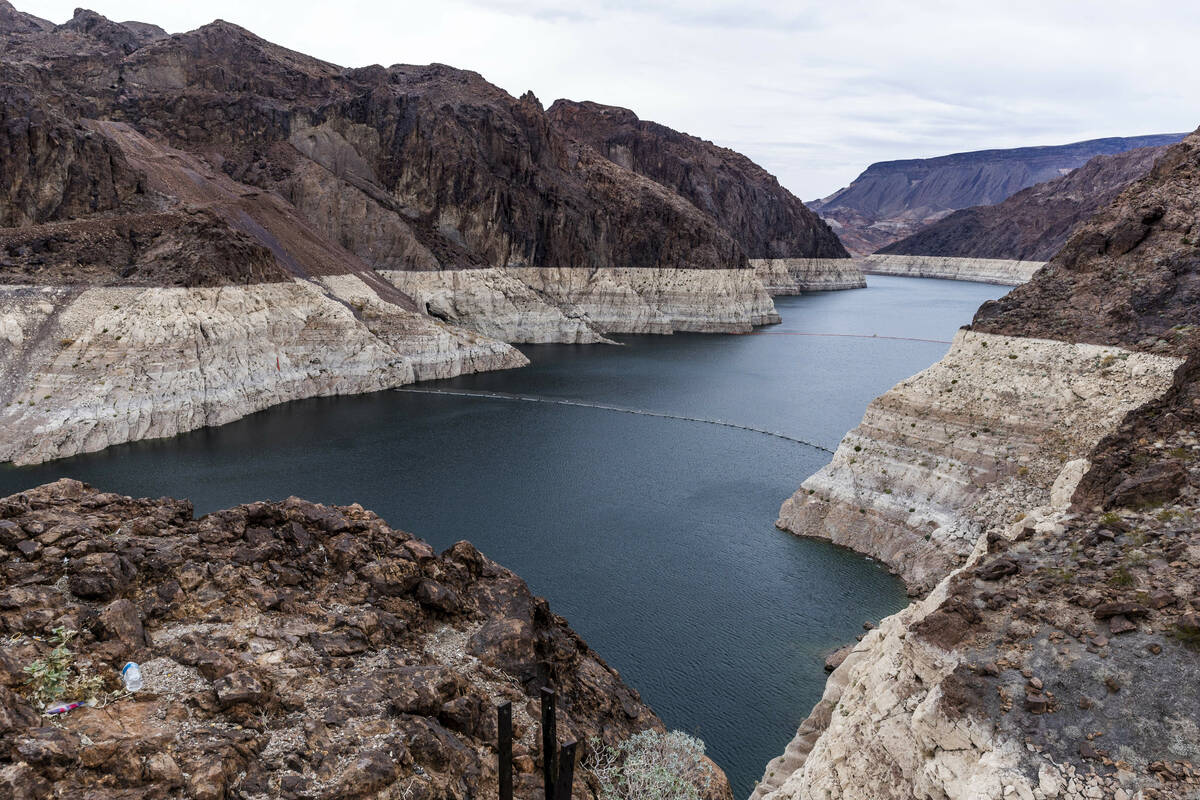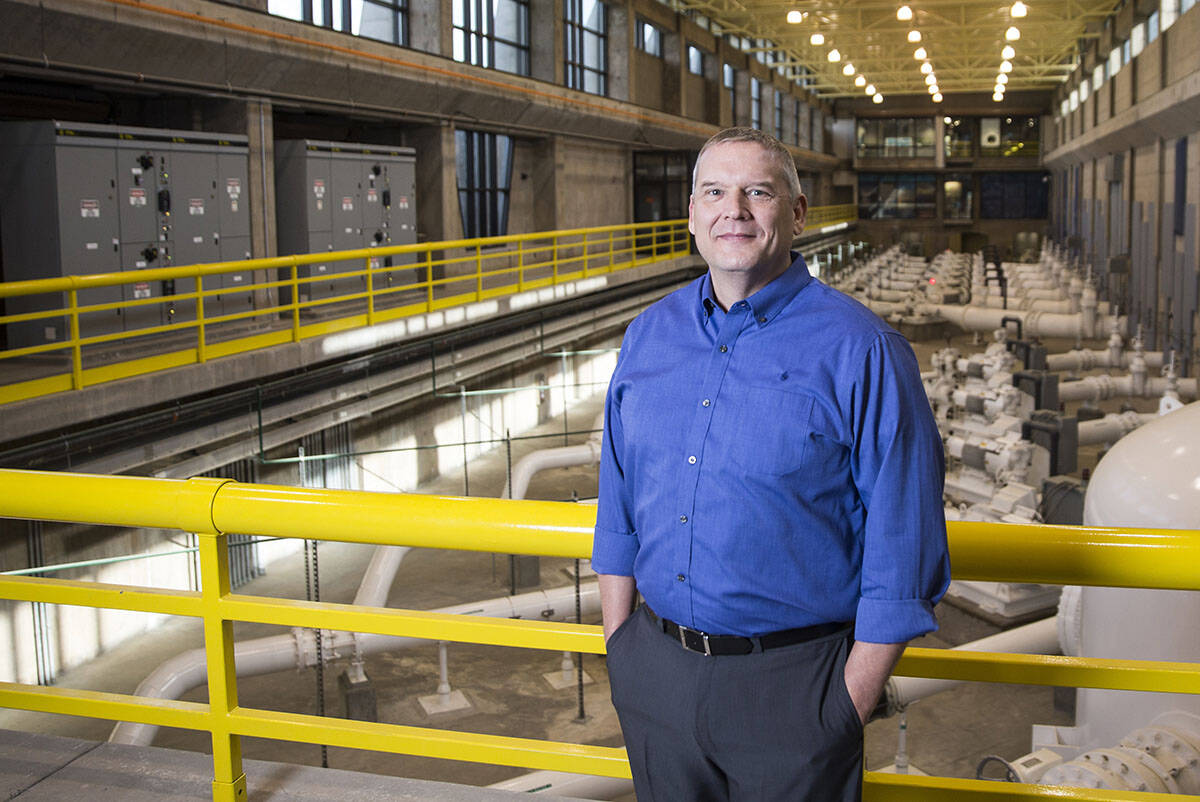What Are They Hiding? Behind closed doors, the Colorado River’s future hangs in the balance
The fate of 40 million people’s drinking water in the West is being hashed out in closed meetings.
The states must reach a consensus every 20 years to update how much water each state is allowed to use and which must cut their allotment as the system loses water to drought.
But unlike other entities that make decisions that directly affect Nevadans’ futures, negotiation meetings are not open to the public or the media.
“There should be a discussion of formally recognizing this as a public-facing body that follows public records and open meeting laws across the states,” said David Cuillier, director of the Brechner Center for Freedom of Information at the University of Florida. “It’s just too darn important.”
Negotiations are critical for Southern Nevada and its residents. The region sources about 90 percent of its water from Lake Mead, a dwindling reservoir that faces an uncertain future amid a decades-long drought made worse by climate change.
In the Colorado River basin, each of the seven states that source water from the river appoint a negotiator who advocates on behalf of the state’s interests. Generally, taxpayers fund their high-paying salaries, such as John Entsminger, general manager of the Southern Nevada Water Authority, who made nearly $540,000 in pay and benefits in 2022.
Both open meeting laws and public records laws regarding multi-state organizations vary widely by state. The negotiators’ meetings are not required to be open to the public by any overarching law, but they could choose to make the meetings open and transparent.
That means there’s no standardized way for reporters to glean information about closed-door sessions, relying heavily on what state negotiators are willing to share and what records requests water agencies decide to fill.
One example of a similar body with open meetings is the Upper Colorado River Commission — a multi-state body that works on water issues where each Upper Basin state governor appoints a representative and so does the president. According to the commission’s bylaws, all meetings are open to the public except during “executive sessions” where sensitive information is discussed.
Allowing the public into every session, formal or informal, would discourage negotiators from speaking freely, which could potentially stifle progress, Entsminger said in an interview with the Las Vegas Review-Journal.
“The primary benefit of being able to operate without the press sitting right there is just time,” said Entsminger, who negotiates on behalf of Nevada. “People would be much more guarded in a process that already has deadline after deadline that we often come up right against.”
There have been proposals to open up other secret meetings when the issue is of great public interest, such as negotiations between the Clark County School District teachers union and administration. Teachers and former Superintendent Jesus Jara were advocates for opening those meetings for transparency’s sake.
Where negotiations stand
With how the river will be managed beyond 2026, two coalitions of states have yet to see eye-to-eye on one important point.
The Lower Basin — Nevada, California and Arizona — is at odds with the Upper Basin — Colorado, New Mexico, Utah and Wyoming — about “sharing the pain” of cuts to water use.
Both basins agree that the Lower Basin states should shoulder cuts to account for the so-called “structural deficit ”of 1.5 million acre-feet, or 488 billion gallons, which is water lost to transport and evaporation. But the Lower Basin states have collectively agreed that the Upper Basin needs to take its share of cuts past that, something the Upper Basin does not agree with.
All negotiators will convene at the Colorado River Water Users Conference in Las Vegas in early December. It’s a rare opportunity for reporters and paying attendees to hear from all negotiators at once, but Entsminger doesn’t expect a consensus announcement at the event.
“I certainly don’t think you’re going to see a final product,” Entsminger said.
If the seven states fail to agree before a set deadline, the U.S. Bureau of Reclamation may intervene, and legal challenges to what the federal government decides could follow. All parties are trying to avoid the courtroom.
The tight-lipped nature of the negotiations can leave journalists — and, by association, the public — in the dark about how close officials are to consensus. Reporters don’t know when meetings happen, how much progress is made or what is being discussed, unless they rely on source relationships with insiders or requesting public records.
Alex Hager, who covers the river for KUNC in Northern Colorado, said he sees the private meetings as part of a larger effort to control what information the public has access to and when.
“Public processes are better when the public can see what’s going on,” he said. “The more people know about it, the more I believe we will have better outcomes for the people who depend on its water.”
The “What Are They Hiding?” column was created to educate Nevadans about transparency laws, inform readers about Review-Journal coverage being stymied by bureaucracies and shame public officials into being open with the hardworking people who pay all of government’s bills. Were you wrongly denied access to public records? Share your story with us at whataretheyhiding@reviewjournal.com.
Contact Alan Halaly at ahalaly@reviewjournal.com. Follow @AlanHalaly on X.


















